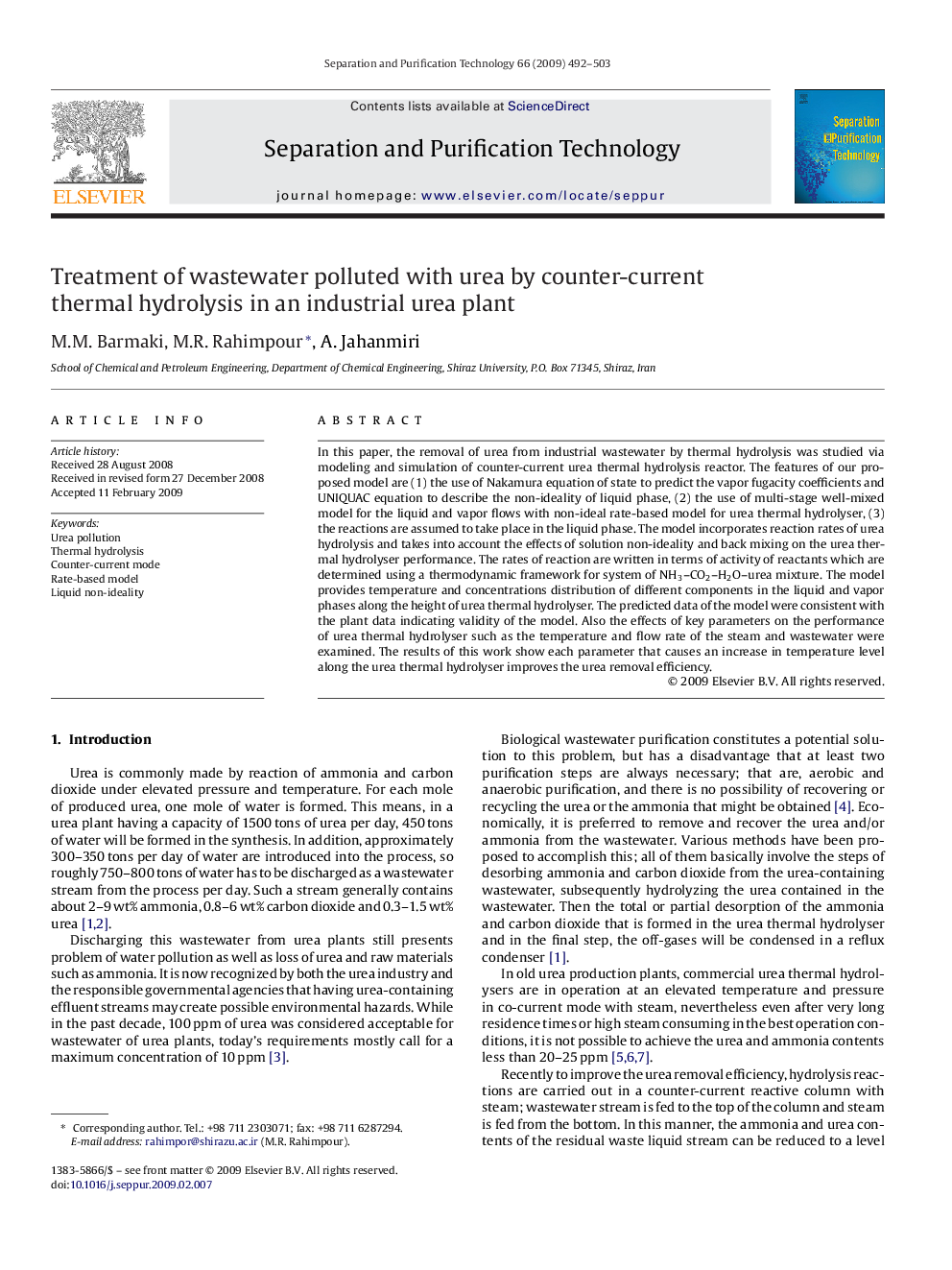| Article ID | Journal | Published Year | Pages | File Type |
|---|---|---|---|---|
| 643465 | Separation and Purification Technology | 2009 | 12 Pages |
In this paper, the removal of urea from industrial wastewater by thermal hydrolysis was studied via modeling and simulation of counter-current urea thermal hydrolysis reactor. The features of our proposed model are (1) the use of Nakamura equation of state to predict the vapor fugacity coefficients and UNIQUAC equation to describe the non-ideality of liquid phase, (2) the use of multi-stage well-mixed model for the liquid and vapor flows with non-ideal rate-based model for urea thermal hydrolyser, (3) the reactions are assumed to take place in the liquid phase. The model incorporates reaction rates of urea hydrolysis and takes into account the effects of solution non-ideality and back mixing on the urea thermal hydrolyser performance. The rates of reaction are written in terms of activity of reactants which are determined using a thermodynamic framework for system of NH3–CO2–H2O–urea mixture. The model provides temperature and concentrations distribution of different components in the liquid and vapor phases along the height of urea thermal hydrolyser. The predicted data of the model were consistent with the plant data indicating validity of the model. Also the effects of key parameters on the performance of urea thermal hydrolyser such as the temperature and flow rate of the steam and wastewater were examined. The results of this work show each parameter that causes an increase in temperature level along the urea thermal hydrolyser improves the urea removal efficiency.
